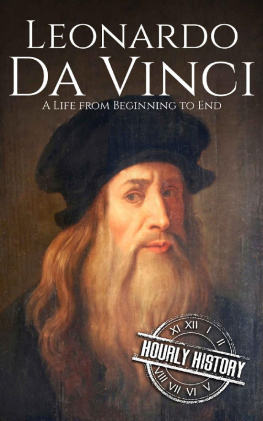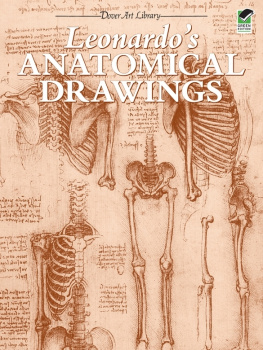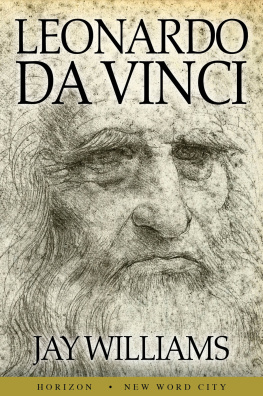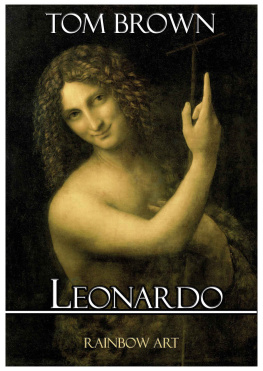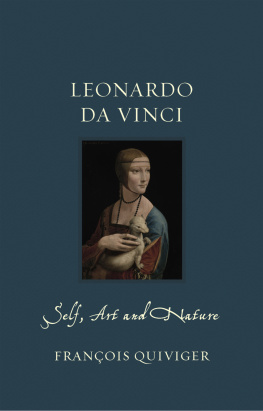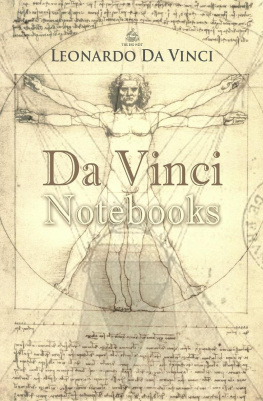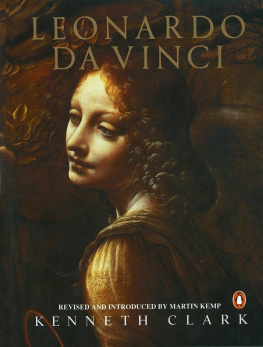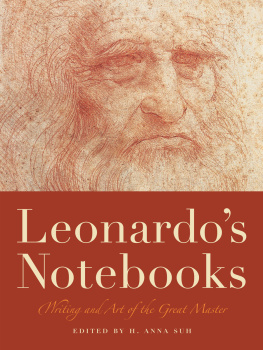da Vinci Leonardo; Leonardo - Learning from Leonardo : decoding the notebooks of a genius
Here you can read online da Vinci Leonardo; Leonardo - Learning from Leonardo : decoding the notebooks of a genius full text of the book (entire story) in english for free. Download pdf and epub, get meaning, cover and reviews about this ebook. year: 2013, publisher: Berrett-Koehler Publishers, genre: Religion. Description of the work, (preface) as well as reviews are available. Best literature library LitArk.com created for fans of good reading and offers a wide selection of genres:
Romance novel
Science fiction
Adventure
Detective
Science
History
Home and family
Prose
Art
Politics
Computer
Non-fiction
Religion
Business
Children
Humor
Choose a favorite category and find really read worthwhile books. Enjoy immersion in the world of imagination, feel the emotions of the characters or learn something new for yourself, make an fascinating discovery.

- Book:Learning from Leonardo : decoding the notebooks of a genius
- Author:
- Publisher:Berrett-Koehler Publishers
- Genre:
- Year:2013
- Rating:3 / 5
- Favourites:Add to favourites
- Your mark:
Learning from Leonardo : decoding the notebooks of a genius: summary, description and annotation
We offer to read an annotation, description, summary or preface (depends on what the author of the book "Learning from Leonardo : decoding the notebooks of a genius" wrote himself). If you haven't found the necessary information about the book — write in the comments, we will try to find it.
Not only did Leonardo invent the empirical scientific method over a century before Galileo and Francis Bacon, but Capras decade-long study of Leonardos fabled notebooks reveals that he was a systems thinker centuries before the term was coined. At the very core of Leonardos science, Capra argues, lies his persistent quest for understanding the nature of life. His science is a science of living forms, of qualities and patterns, radically different from the mechanistic science that emerged 200 years later.
Because he saw the world as an integrated whole, Leonardo always applied concepts from one area to illuminate problems in another. His studies of the movement of water informed his ideas about how landscapes are shaped, how sap rises in plants, how air moves over a birds wing, and how blood flows in the human body. His observations of nature enhanced his art, his drawings were integral to his scientific studies, and he brought art, science, and technology together in his beautiful and elegant mechanical and architectural designs.
Capra describes seven defining characteristics of Leonardo da Vincis genius and includes a list of over forty discoveries he made that werent rediscovered until centuries later. Capra follows the organizational scheme Leonardo himself intended to use if he ever published his notebooks. So in a sense, this is Leonardos science as he himself would have presented it.
Obviously, we cant all be geniuses on the scale of Leonardo da Vinci. But his persistent endeavor to put life at the very center of his art, science, and design and his recognition that all natural phenomena are fundamentally interconnected and interdependent are important lessons we can learn from. By exploring the mind of the preeminent Renaissance genius, we can gain profound insights into how to address the complex challenges of the 21st century.
da Vinci Leonardo; Leonardo: author's other books
Who wrote Learning from Leonardo : decoding the notebooks of a genius? Find out the surname, the name of the author of the book and a list of all author's works by series.

